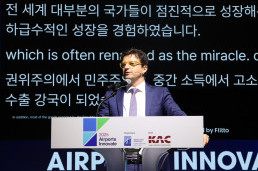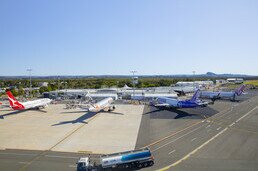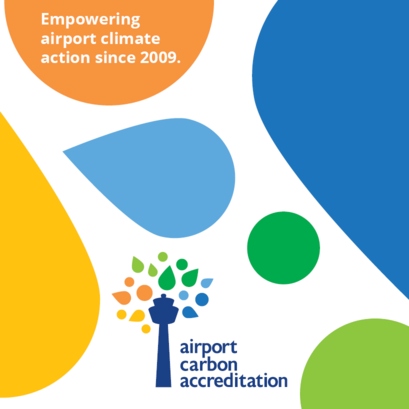
Auckland Airport opens historic airfield expansion
- 2025-09-24
• Most significant infrastructure project undertaken since the airport opened in 1966
• New $465 million airfield adds equivalent of 23 rugby fields of new apron and taxiway space
• Parking created for up to 11 jets, including five fully serviced flexible stands and one unserviced stand
• Future-ready to support efficient airfield operations and growth
• Critical project that enables next phase of domestic jet terminal construction to advance
• Cargo hub integration – AKL handles $26 billion in trade annually, rising to $41 billion by 2032 with around 80% of NZ’s airfreight travelling in passenger aircraft
• Workforce peaked at 600 construction workers on site daily.
More than half a century after its original construction, Auckland Airport’s has officially opened its most significant airfield expansion.
Adding around 23 rugby fields of space to the airport’s existing 1.4 million square metre apron, taxiway and runway network, it creates parking for up to 11 jets, while strengthening cargo connections between road and airfield.
Auckland Airport Chief Executive Carrie Hurihanganui said it marked a milestone moment for AKL, completing a major piece of aeronautical infrastructure to support New Zealand’s growth ambitions and keep the country’s gateway airport running efficiently.
“Right now, New Zealand’s international connectivity is still recovering to reach and surpass 2019 levels, but we are optimistic for the future with long-term growth on the horizon. Key international airline partners tell us they are preparing to take delivery of new aircraft over the coming years, including one with an order of around 150 planes.
“This growth presents an important opportunity for New Zealand, and AKL’s airfield investment means we will have the right infrastructure in place, at the right time, to support efficient operations while strengthening the country’s travel and trade connections,” she said.
The newly opened airfield includes five MARS (Multiple Aircraft Ramp System) stands, each with jet fuel connections and future-proofed with electricity connections, with one unserviced stand. Built with flexibility in mind together they can accommodate both widebody and narrowbody jets.
“The availability of these stands increases our airfield efficiency, allowing aircraft with longer layovers to move off the terminal gates and park up here to prepare for the outbound flight, particularly during our daily peak periods,” said Ms Hurihanganui.
The new apron sits alongside Auckland Airport’s developing cargo precinct, which connects directly via a newly built airside road and secure access.
“Cargo is an important, if sometimes less visible, part of international connectivity,” Ms Hurihanganui said.
“While we are served by a strong freighter network, around 80% of New Zealand’s air cargo still travels in the belly of passenger aircraft. Much of it is high-value New Zealand produce – flowers, salmon, cherries – that must arrive in overseas markets in perfect condition, often at times of peak demand like Christmas and New Year.
“By creating an efficient, integrated cargo hub we’re helping New Zealand businesses grow, with faster turnaround times and closer coordination between airlines, freight companies and ground handers.”
Auckland Airport handles more than $26 billion in trade, making it New Zealand’s third-largest port by cargo value. By 2032, this is expected to rise to more than $41 billion annually.
The new international airfield also paves the way for Auckland Airport to advance construction of the new domestic jet terminal, closing an area of airfield space to be reconfigured to become the new domestic jet terminal aircraft pier and apron.
Once complete, the 240-metre-long pier, featuring 12 jet gates and a dedicated 80,000 m2 domestic apron, will deliver 26% more seat capacity than the existing domestic terminal.
Creating an airfield
Built to take the weight of some of the largest passenger aircraft, the northern airfield expansion is the most significant infrastructure project undertaken since the airport opened.
Jason Dardis, Airfield Programme Director, said the new pavement is designed with strength in mind.
“The airfield has a pavement build-up of about one metre with the top layer being half a metre of concrete. In some areas, where we were installing services and the 4.4km stormwater system that now runs under the airfield, we have excavated down to six metres,” said Mr Dardis.
“We poured enough concrete to fill more than 25 Olympic swimming pools and moved more than a million cubic metres of soil to prepare the site.”
Recycling played a major role. Around 108,000 tonnes of old runway concrete was crushed and reused to help build the foundation layer of the new airfield.
“By reusing what was already here, we avoided thousands of truck trips on local roads and reduced the project’s carbon footprint,” Mr Dardis said.
Years in the planning, construction started in 2019, paused during the pandemic before restarting in mid-2022. At its busiest, the project had around 600 workers on site every day.
“It’s been a huge team effort and a significant step in preparing the airport for the future,” said Mr Dardis.
Future ready
While five of the new stands are fully serviced with fuel connections (including Sustainable Aviation Fuela capability), they don’t currently link directly to the international terminal via airbridges. However, provision has been made in the terminal and airfield design for future conversion to contact stands when required, including having electricity in place to add in ground power units.
“As part of our master planning process, which is underway now, we anticipate a time when more contact stands will be needed,” said Ms Hurihanganui.
“When it was built around 17 years ago, the design of Pier B on the international terminal contemplated this, with allowance for additional gate lounges and aircraft gates to be added to the northern side as demand grows.”
The expansion also provides the building blocks for future airfield growth, including more serviced stands. These would ultimately connect via taxiways to a second runway, if a decision is made to proceed with the project in the future.







